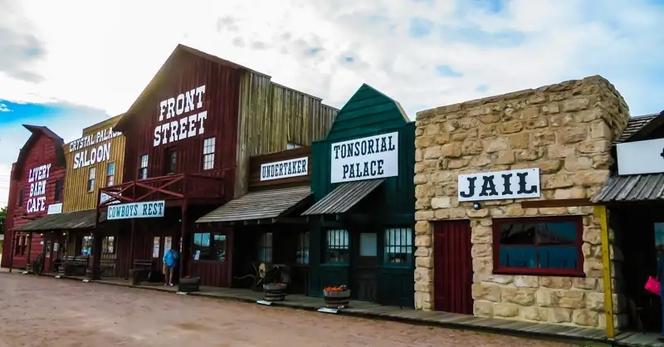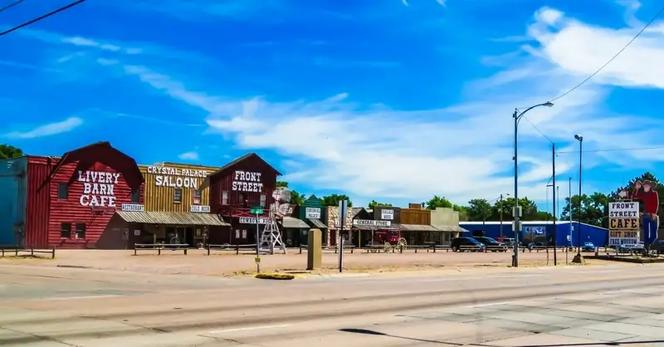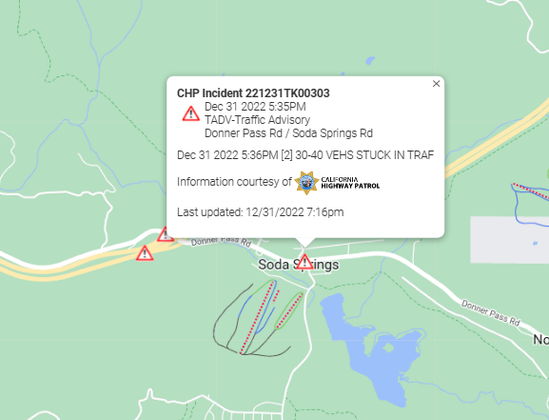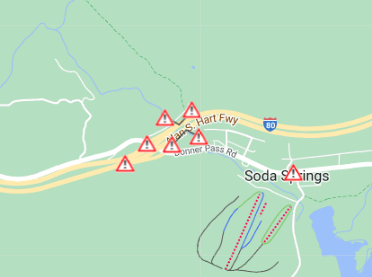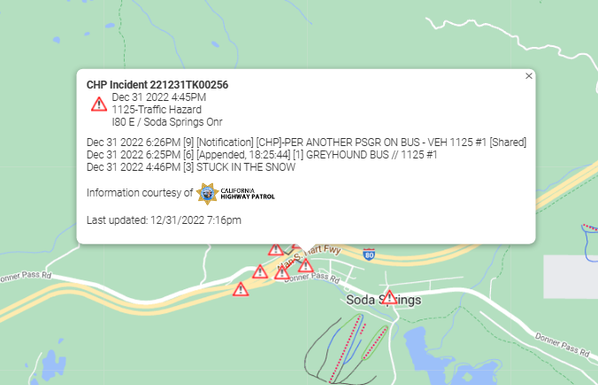Front Street Cowboy Museum: Ogallala, Nebraska
The Front Street Cowboy Museum is all about the wild, wild west and driving Texas Longhorn cattle. Located in Ogallala, Nebraska, this visitor attraction brings the town’s rich Old West history to life.
Front Street in Ogallala, Nebraska. Photo by Linda Aksomitis. Linda’s Pick of the Exhibits
Like most people, I enjoy a good story. And there are no better stories than the myths of supernatural creatures. In Nebraska, that creature is the Sandhills Warrior Rabbit. The museum even has one in its collection!
Nebraska Sandhills Warrior Rabbit – the image is from a rabbit taxidermy photo taken in the museum and a software generated background. Image by Linda Aksomitis. The warrior rabbit draws on the the American traditional tale of the Jackalope. These Jackalope tales originate from hybrid animal stories around the world.
Where did the Jackalope tale originate?
One of the earliest stories of a horned rabbit is from 13th-century Persia. The jackalope legend stems from a rare virus called Shope papilloma virus that infects rabbits and causes horn-like keratin tumors to grow. It’s believed that these tumors inspired folklore about horned or “warrior” rabbits.
Scientific research shows that rabbits with these horn-like growths are real but rare. They’re not a distinct species.
But back to the midwest. In 1932 two brothers in Douglas, Wyoming, studied taxidermy by mail order. One day, one of them tossed a rabbit carcass they planned to work on into their taxidermy collection where it came to rest beside a pair of deer antlers. That gave young Douglas Herrick an idea.
Doug and his brother mounted the rabbit with horns and sold it to a local hotel owner. From there, the story grew and grew and grew with the brothers’ taxidermy sales. Other taxidermists manufactured the rabbits right into the 21st century.
The jackalope has appeared in books, poems, television shows video games and mokumentaries.
Today, tourists can even buy a Jackalope Hunting License in Douglas.
So, the Nebraska Sandhills Warrior Rabbit is one of a group of tall tale animals. This type of tall tale is known as “fearsome critters” and is common to North American culture since the early 1900s.
Indeed, the warrior rabbit has supernatural powers making it a fierce, resilient animal able to survive in the Sandhills.
If you enjoy fearsome critter tales, The National Fresh Water Fishing Hall of Fame and Museum in Hayward, Wisconsin, is home to another fearsome critter — the hodag.
What’s in the Front Street Cowboy Museum?
Front Street in Ogallala, Nebraska, is a replica town of the 1880s old west cowboy town. At the time, Ogallala was a major cattle-driving and cattle-shipping hub.
How did Ogallala become a cattle-shipping hub?
Early in U.S. history, the Chisholm Trail was the trail of choice for driving cattle to the northern states looking for higher prices. The Chisholm Trail ran from the Rio Grande or San Antonio to the railhead of the Kansas Pacific Railway in Abilene. From there, the cattle were shipped to the more populated states in the East.
However, the Chisholm Trail was cut off when farmers began settling and fencing eastern Oklahoma and Kansas. The new Texas Trail (also called Western Trail) grew up from Dodge City to the Union Pacific railhead in Ogallala.
While Dodge City was the end of the trail for some outfits, others with younger stock pushed north to Ogallala. These were sold to ranchers in the area to fatten over the summer and ship out in the fall.
Ogallala became a seasonal gathering place. Saloons were hopping in the spring with Texas cattle bosses selling cattle to local cattlemen. In the fall, action stepped up again as the ranchers brought their steers off the grass to ship east.
As many as 125,000 head of cattle were brought to Ogallala each year.
Ogallala’s heyday as a cow town ended in 1884, when an epidemic of Texas fever caused heavy losses of cattle in Nebraska. States began to enact quarantine laws to protect their livestock. While a few cattle still trickled into Ogallala, the town soon settled into a farming community.
These connected building fronts are filled with memorabilia and cowboy artifacts from the era. Building fronts include:
- Livery Barn Cafe (Restaurant)
- Crystal Palace Saloon (Cold Beer in Ogallala’s famed saloon that saw many gunfights in its hey-day)
- Front Street Cowboys Rest (Buffalo burgers, mountain oysters (bull testicles), steaks, and more)
- Undertaker (Death by gunfights happened on a regular basis to the undertaker’s shop and hearse were important)
- Tonsorial Palace (1870s style barber shop)
- Jail (includes the Sheriff’s office)
- General Store
Replica b
uildings on Front Street – Livery Barn, Saloon, Caretaker, Tonsorial Palace, and Jail. Photo by Linda Aksomitis. Front Street is listed on Wikipedia as being on the National Register of Historic Places listings in Keith County, Nebraska.
Some Front Street Displays
Front Street is all about the stories of cowboys, cattle drives, and outlaws. There are lots of different artifacts and photos to bring the stories to life.
Fast Fact: A Black Cowboy Memorial located at Grand Island, Nebraska, honors Amos Harris who died in February, 1911. Thousands of black cowboys rode the rails, driving millions of cattle north. Many of them were the best riders, ropers and wranglers.
~ Front Street Cowboy Museum
Here are some displays I particularly enjoyed.
- Soiled Doves – Saloon Women in Ogallala during the Texas Cattle Drive Days. Photos and displays show their costumes, lifestyles, and challenges working for Madams like “Big Alice.”
- Cowboy gear from boots and spurs to holsters and revolvers.
- Sheriffs who served the town. One display honors Martin DePriest, a Texan who came up the trail in 1877. He served for 11 years and was injured a number of times. He was known for his deliberate coolness in the face of danger, rather than relying on punches or his guns.
- Information about Buffalo Bill Cody.
- Native Americans of Ogallala. Various displays provide the history of the local Sioux people.
- Trails West features paintings, artifacts, and books written about life on a cattle drive.
Spurs of various types. The mail saddlebag belonged to the Paxton Ranch north of nearby Keystone, Nebraska. Niel Scully worked for the ranch and carried the mail by Pony Express from Ogallala to the Paxton Ranch for distribution as there wasn’t a post office in Keystone. Photo by Linda Aksomitis. You can also relive the Old West watching the Front Street Crystal Palace Revue. With 60+ seasons, it’s the longest-running summer stock theatre in Nebraska.
Linda’s Road Trip Tips
Ogallala is a great destination for those who love the old west. Geographically, it’s also in a fascinating area. Indeed, Nebraska’s sandhill dunes cover about 20,000 square miles and are believed to be the largest dune field in the Western hemisphere. They were formed about 8,000 years ago and designated a National Natural Landmark in 1984.
Boot Hill. Pin me! Be sure to visit Boot Hill while you’re in Ogallala. It was established during the Texas Trail era of the late 1800s.
Some buried there met their end in saloons and gambling halls.
Rattlesnake Ed, who was shot over a card game at the Cowboys Rest Saloon, was one of them.
In direct contrast, you can also visit Mansion on the Hill. This Victorian style home was completed in 1887 — Ogallala’s finest home at the time. It’s listed on the National Register of Historic Places and worth the visit.
Also, I recommend a stop at the Petrified Wood Gallery while you’re in Ogallala. The gallery includes a collection of fossils and hand-crafted petrified wood figures made by Harvey and Howard Kenfieldin. I also found the 92 pewter figures of Native Americans, cowboys, and cavalry soldiers impressive.
Who Should Visit Front Street Cowboy Museum?
Front Street Cowboy Museum is a great stop for anyone interested in the wild and rugged days of the old west and cattle drives.
Indeed, the town was integral to the Lonesome Dove tv miniseries.
It takes a couple of hours to go through the exhibits, although you can spend more time stopping for a meal or drink.
The museum is family-friendly. It also has ramps and flat walkways in the replica 1880s street to aid those using strollers or who have mobility issues.
Stagecoach. Pin me! How Do You Visit Front Street Cowboy Museum?
Front Street Cowboy Museum is located at the intersection of Interstate 80 (I-80), US-26, and Nebraska Highway N-61.
Parking: Free parking is adjacent to the museum.
Location: 519 East 1st St Ogallala, Nebraska.
The museum has free / donations only admission and is open year-round. Check for hours on the Front Street Cowboy Museum website.
Take a virtual tour of the museum with Backroads Tourist on YouTube.
Plan your visit with Google Maps.
Acknowledgments
These stops were all part of a Fam tour hosted by the Gering Convention and Visitors Bureau, Scotts Bluff Area Visitors Bureau, and Nebraska Tourism Commission.
More Places to See in Nebraska
Check out all of guide2museum.com’s reviews of museums in Nebraska.
Read More Reviews of Heritage Museums
-
Front Street Cowboy Museum: Ogallala, Nebraska
-
Discover the Mormon Handcart Historic Site & Devil’s Gate in Wyoming
-
See 100 Miles Across Nebraska From Scotts Bluff National Monument
-
Standout Ranching History at the MonDak Heritage Center: Sidney, Montana
-
New Iceland Heritage Museum: Gimli, Manitoba, Canada
-
Crazy Horse Memorial & Museums: South Dakota’s Black Hills
-
Myra Museum: Lustron House & More in Grand Forks, North Dakota
-
Fort Cody Trading Post: Miniature Wild West Show in North Platte, Nebraska
-
Miracle of America Museum: 40+ Buildings in Polson, Montana
-
Sukanen Ship Pioneer Village & Museum: Moose Jaw, Saskatchewan
-
Museum of Northern British Columbia: Indigenous Art & History in Prince Rupert, British Columbia
-
Heritage Village: Museum in Weyburn, Saskatchewan
-
Vermilionville: Living History Open Air Village in Lafayette, Louisiana
-
Museum of the Southern Jewish Experience: New Orleans, Louisiana
-
National Doukhobor Heritage Village: Veregin, Saskatchewan
-
Bonanzaville: Open Air Pioneer Village Museum in Fargo, North Dakota
#cowboys #history #I80 #museums #travel #US_
